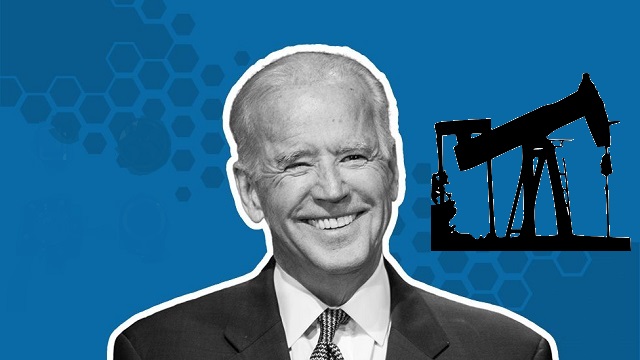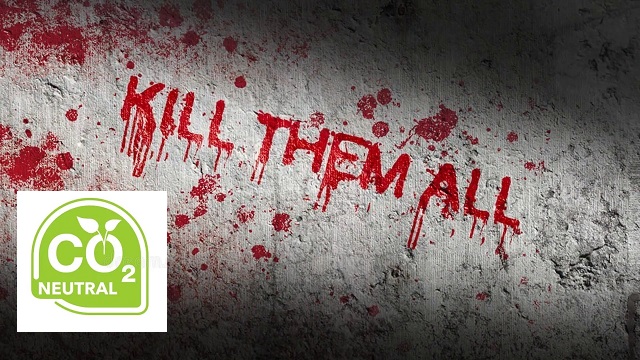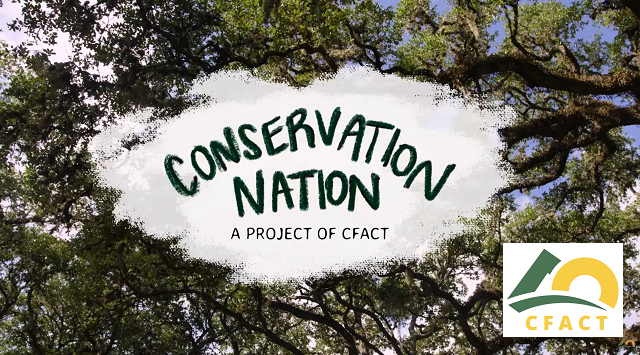Mr. Bean Was Right About EVs And So Was Toyota
By Duggan Flanakin
When auto (even EV driving) enthusiast Rowan Atkinson – Mr. Bean to his fans – last June wrote in The Guardian that there are “sound environmental reasons” why “keeping your old petrol car may be better than buying an EV,” he was vilified as an eco-traitor.
Atkinson had added, “We’re realizing that a wider range of options need to be explored if we’re going to properly address the very serious environmental problems that our use of the motor car has created.” These include, he said, hydrogen fuel cells and synthetic fuels that would extend the lives of older vehicles long after governments are demanding they be scrapped.
Atkinson, who has a bachelor’s in electrical and electronic engineering and a master’s in control systems, urged Britons to “look at a bigger picture” to include greenhouse gas emissions during the manufacture of electric vehicles and to evaluate the whole life cycle of motor vehicles.
Relying on a dash of common sense, Atkinson noted that pushing so heavily so soon for EVs that have major flaws will result in “millions of overweight electric cars with rapidly obsolescing batteries.” Technological developments with hydrogen and synthetic fuels, which can power existing internal combustion engines, may prove a better long-term solution. For one reason, the owners of the world’s 1.5 billion ICE vehicles could continue enjoying them.
For sharing his insights, Atkinson was immediately smacked around by snarky reporters and EV “experts”. Simon Evans, deputy editor at Carbon Brief, slammed Atkinson for not adhering to Carbon Brief’s own “evidence” from years back stating that EVs cut “planet-warming emissions” by two-thirds on a life cycle basis and calling EVs “an essential part of tackling the climate emergency.”
How dare he?
Michael Coren, writing in the Washington Post, portrayed Atkinson as an iconoclast clinging to his petrol car, lampooned hydrogen and synthetic fuels as expensive and impractical, and compared ICE vehicles to hobby horses. Coren argued that “making every car burn [hydrogen] is not a good idea,” yet implied that forcing every driver to buy an EV is a very good idea.
Eight months later, though, the detractors who had hoped to make Atkinson an example of a troglodyte were singing a different tune in the wake of a collapse in the British EV market.
Mr. Bean was condemned in the House of Lords by the Green Alliance as “partly at fault for ‘damaging’ public perceptions” of EVs and as a dangerous enemy of Britain’s drive to Net Zero. The Guardian, which published Atkinson’s tome, was accused indirectly of failing to adhere to “high editorial standards around the Net Zero transition.”
[Translation: ONLY glowing reports on EVs are acceptable public speech.]
It couldn’t have been the exorbitant cost of auto insurance for EVs, their tendency to catch fire and burn for days, or the high cost and long wait times for parts and repairs – or the long waits at charging stations to plug in and wait for enough charge at least to reach the next destination. Nor could it be that people are uncomfortable enriching China as their own auto companies face bankruptcy. No – it was allowing someone to publicly question the rush to electrification.
Halfway around the world, Toyota, which “lagged behind” its major competitors in ditching their ICE vehicle fleets for all-EV production lines, “is riding a windfall of hybrid vehicle sales on its way to posting projected net profits of more than $30 billion.” While Ford lost $4.7 billion trying to create an EV market, dropping its net profit to just $4.2 billion, Toyota now appears to be in better financial shape than its American and European competitors.
Over a year ago, then-Toyota CEO Akio Toyoda had cautioned that the EV transition would “take longer than the media would like us to believe.” Ford, GM, Stellantis, and many other automakers worldwide played nice with the political and financial giants while Toyota’s management stepped away from the rhetoric, looked at the numbers, and chose a commonsense approach to the evolving world auto marketplace.
The company did sell 15,000 pure EVs in the U.S. in 2023, but they also sold 40,000 plug-in hybrids and more than 600,000 non-rechargeable hybrids out of total U.S. sales of 2,248,477 vehicles, a 6% increase from 2022 levels. Ford fell short of its goal to produce 300,000 EVs a year by 2023 and has revised its earlier forecast of 2 million EVs by 2026. Worse, Ford now expects to lose as much as $5.5 billion on EVs in 2024.
Over in Europe, Volvo just announced it is withdrawing support for its marquee electric vehicle Polestar and hopes to sell its 48% stake, possibly to a Chinese buyer. Just days earlier, Polestar had cut 450 jobs, about 15% of its workforce.
Elsewhere in Europe, EV sales are expected to decline in 2024 in Germany, Europe’s largest auto market, and Renault just scrapped plans to spin off its Ampere EVs, blaming a lack of interest from investors and a slowdown in sales.
EV sales in the United Kingdom also flatlined in 2023, and prices for used EVs fell sharply, raising questions about their residual value. Even EV-friendly Switzerland admits it will take at least 20 years to fully electrify its fleet; while EVs and hybrids today comprise about 30% of Swiss new car sales, these vehicles amount to less than 4% of the total national fleet.
Oil and gas companies are getting the message, too. BP, which once billed itself as “Beyond Petroleum,” has been encouraged by an activist investor to reduce its investments in renewables and recommit to oil and gas. A major reason – oil and gas investments in recent years have boomed while investments in renewables have faltered. Bluebell Capital Partners asserted that BP’s commitment to renewable has left its stock price undervalued by 50% compared to ExxonMobil and Chevron.
President Biden’s demand that the U.S. comply with his EV mandates was dealt a major blow last month when auto rental giant Hertz, heretofore the nation’s largest fleet operator of electric vehicles, announced it was selling all 20,000 of its EVs and not buying any more. The company cited high repair costs and weak demand for EV rentals. Karl Bauer of iSeeCars.com, noting that mainstream consumers were already hesitant to buy an EV, said, “The larger impact of the Hertz EV fire sale is the perception hit to the technology.”
The fictional Mr. Bean is known (and revered) for his original and often absurd solutions to problems and, his total disregard for others while solving them, and his pettiness and occasional malevolence. Had the British press mocked Mr. Atkinson for a Bean-like performance, the climate emergency propagandists might have laughed him off successfully.
But they are not able to laugh without derision.
The real Mr. Atkinson, like the decision makers at Toyota, is espousing commonsense wisdom such as “don’t put all of your eggs in one basket.” Extending the lifespan of existing vehicles, even with currently high-cost hydrogen or synthetic fuels, is far better for the environment than junking them for electric vehicles that require diesel fuel to power charging stations.
If, as we are told, EV batteries will soon be smaller, cheaper, and stronger, that day has not yet come. Just as likely, the cost of hydrogen and synthetics will also drop significantly, and those fuels can power existing ICE vehicles. Most of all, if there truly were a “climate emergency,” diplomats would be quicker to end military conflicts and end the rush by China and India to build more and more coal-fired power plants (needed, of course, to charge EV batteries).
What Mr. Bean and Toyota are truly saying to the world is that mandates – the government deciding what can and cannot go to market – and the huge subsidies that go along with them (which would be unnecessary in a true emergency) are at war with the wisdom of the market, which relies on true public opinion as to what is best for the consumer.
*****
This article was published by CFACT, Committee For a Constructive Tomorrow, and is reproduced with permission.
Image Credit: YouTube Screenshot
TAKE ACTION
The Prickly Pear’s TAKE ACTION focus this year is to help achieve a winning 2024 national and state November 5th election with the removal of the Biden/Obama leftist executive branch disaster, win one U.S. Senate seat, maintain and win strong majorities in all Arizona state offices on the ballot and to insure that unrestricted abortion is not constitutionally embedded in our laws and culture.
Please click the TAKE ACTION link to learn to do’s and don’ts for voting in 2024. Our state and national elections are at great risk from the very aggressive and radical leftist Democrat operatives with documented rigging, mail-in voter fraud and illegals voting across the country (yes, with illegals voting across the country) in the last several election cycles.
Read Part 1 and Part 2 of The Prickly Pear essays entitled How NOT to Vote in the November 5, 2024 Election in Arizona to be well informed of the above issues and to vote in a way to ensure the most likely chance your vote will be counted and counted as you intend.
Please click the following link to learn more.
















